Recent donation of historic photographs presents archival mystery
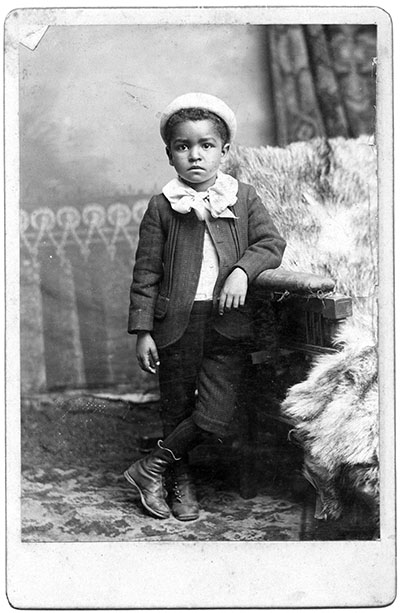
One of the best things about working at the archives in Hill Memorial Library is you just don’t know when something interesting is going to come walking in the door.
Of course, most days we don’t see anything new come into the collections. The amazing thing is that anything survives the vagaries of time at all much less makes it to us. That fact makes receiving something “good” all that much more exciting.
The latest example of this happy accident started with an email from Nicole Rambin. No one was expecting to be contacted, so when Mark E. Martin, Photographic Processing Archivist, saw an email with the subject line “A. D. Lytle” he didn’t know if it was a query about Lytle or something else.
It’s not uncommon for Martin to be contacted about Lytle; his book, Andrew D. Lytle's Baton Rouge : photographs, 1863-1910, is the definitive work on Lytle and draws entirely from materials in Special Collections. Most of the time, however, the contact is more about identifying the person in an image or seeing if there is something lurking in the stacks that no one has seen yet.
Special Collections usually can’t help with the identification of individuals and, you’ll have to trust us on this one, there is nothing hiding in the stacks. We want our collections to be used so “hiding” materials isn’t part of what we do.
Things started well this time. Ms. Rambin, the donor, wanted to know if we would be interested in “some pictures taken by Lytle photography from the late 1800s. Not sure what to do with them but feel you may benefit from having them. The pictures are portraits of African Americans. Also some are stamped Dambly Bros., Plaquemine, and Stevenson Studio Cairo, ILL.”
Portraits of African Americans from the late-1800s? Why, yes, we are interested in seeing those!
Why the interest? Largely because most photographic images of African Americans from the late 1800s typically feature sharecroppers and laborers in the fields. In contrast, these photographs show us well-to-do men and women dressed for the camera, enjoying the luxury of having expensive studio portraits made. In addition, Lytle was a white businessman in post-Reconstruction Baton Rouge. Having African Americans in his studio would have made quite a statement in his day and tells us something about Lytle.
When Ms. Rambin arrived at Hill Library a few days later with her materials in a plastic shopping bag, Tara Laver, Interim Head of Special Collections, and Mark Martin met with her. Some of the images were loose. Some remained in the pages of a Victorian photograph album with a broken spine and loose pages. The rest were tucked inside the album between the covers and the front and back pages. Most were cabinet cards, a type of photograph measuring about 4” x 6” and mounted on cardboard that was meant to stand up in a cabinet for display. The form was popular between 1870 and 1900. Once the images were out of the bag, Laver and Martin knew immediately that they were interested in accessioning the materials.
While the individuals in the studio cabinet cards were not identified, about half of the images have studio imprints identifying the photographers, the city where the images were created, and some other clues about their origin.
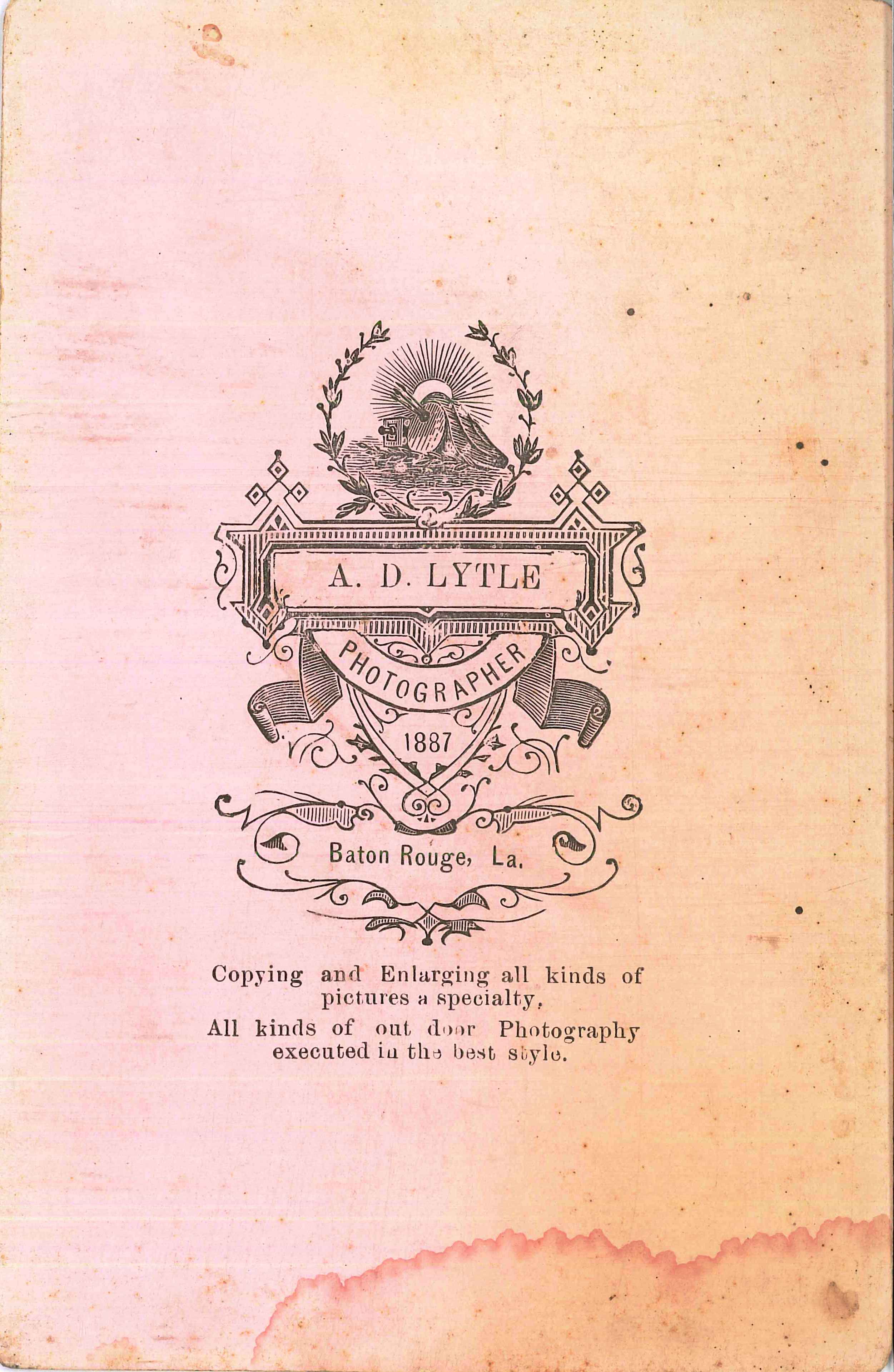
Most of the Lytle Studio cards had a studio imprint with the year they were created, in this case, 1887 through 1891. The portraits were fairly well-preserved and, though we do not know who the individuals pictured are, the images were terrific examples of well-to-do African Americans “dressed for the camera” with the men in suits and the women in elaborate dresses. These are the first such Lytle portraits that Special Collections has come across.
The Dambly Brothers, Photographers, are listed in the 1890 Baton Rouge city directory. The portraits with this studio imprint are equally interesting for a number of reasons. First and foremost, Special Collections does not have many of this local studio’s works. Secondly, the studio imprints tell us the Brothers had studios in Baton Rouge and Plaquemine, Louisiana, as well as St. Cloud, Minnesota; the St. Cloud location is new information for us. Thirdly, as with the Lytle Studio portraits, all the subjects are well-dressed, apparently prosperous individuals, though in the case of this group there are no men pictured.
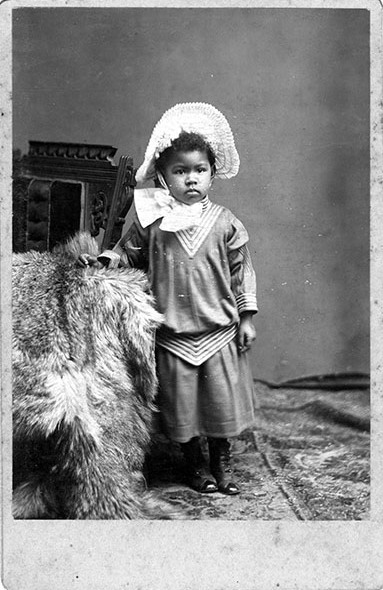
The rest of the studio portraits were not identified in any manner but the subjects were similar to the others. Even better, four of the images are of children, again dressed for the camera. “It’s the children’s shoes that tell the tale of their economic status,” says Martin. “The shoes appear to be custom made. Given the way children’s feet change size so rapidly, a pair of these shoes would not have fit very long. New shoes ever year or less would have been a huge expense.”
One of the most interesting of the later images is a tourist “real photo” postcard created in Hot Springs, Arkansas by the Arlington Studio.
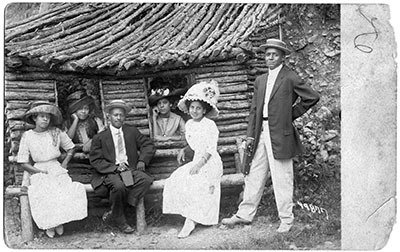
The four women, wearing marvelously elaborate hats, and two men, wearing straw boaters, are arrayed around an outdoor studio scene showing a small cabin constructed of branches. While not dated on the card, these “real photo” postcards came on the market around 1902, making them the first indicators that these materials spanned the 19th and 20th centuries.
Another visual highlight of the collection is a set of four large format prints from around 1920 carrying the studio imprint of Stevenson Studio, Cairo, Illinois. These images show the stage of a theater with scenes from two different productions. One of those productions had a cast of four men and eight women, shown standing in front of an elaborate Egyptianate painted backdrop. These cast members are in black-face and white-face with two black men not made up. A seven-piece band occupies the orchestra pit.
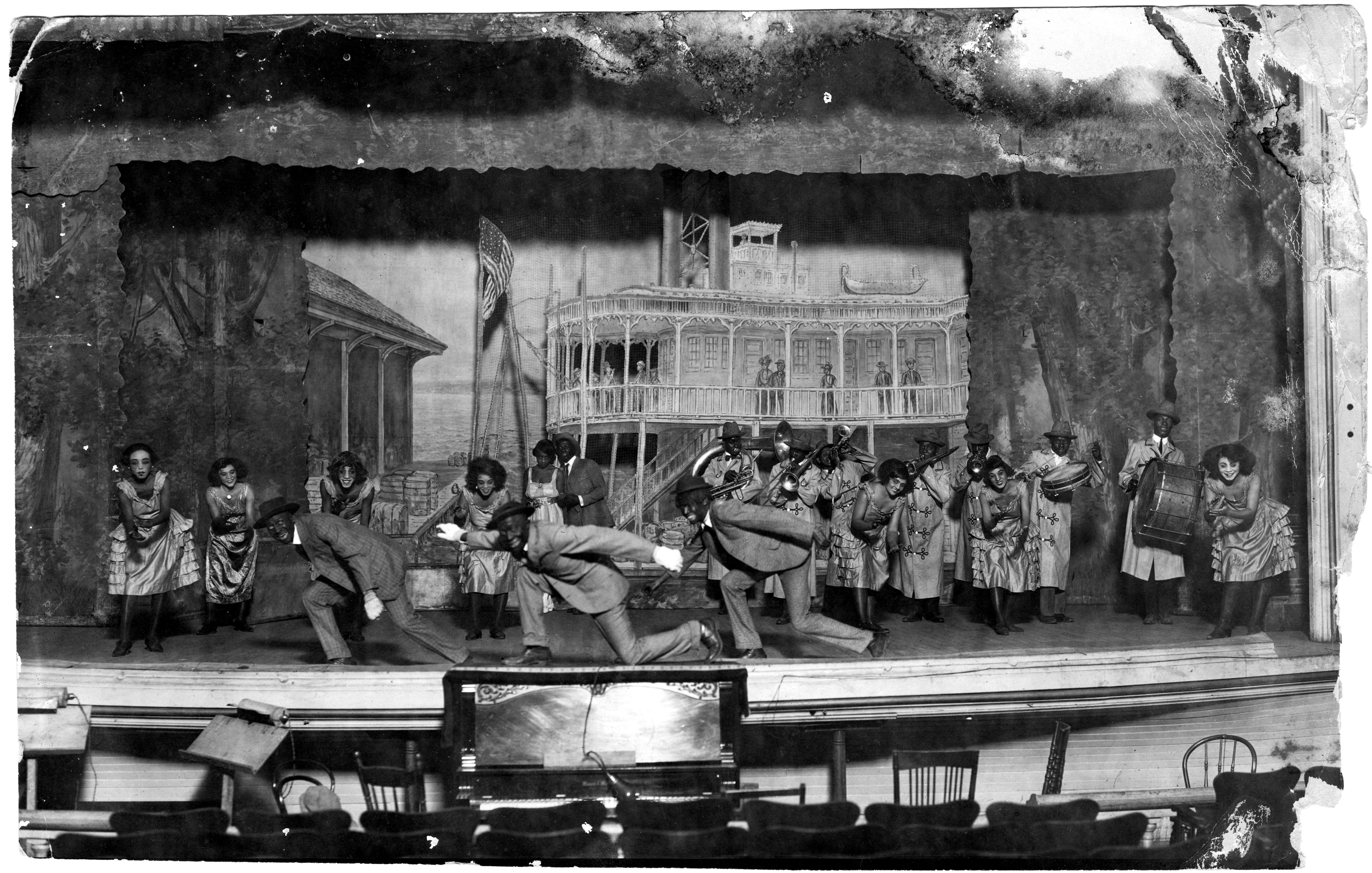
The other production appears to have a “showboat” theme, given the painted backdrop showing a steamboat at the dock with the cast arrayed in front of it. Here again, the cast is in a mix of black-face and white-face with a seven-piece band on stage with the cast. The Band members are not made-up but all the members are African American. From the format and some evidence internal to the images, these theater images probably date from around 1910 to 1920.
A later set of images document what appears to be a religious meeting of some unknown nature. Once again, the images are not identified or dated, but an automobile in the picture helps us date the group to the late-1940s at the earliest.
What appears to be the most recent image in the collection was created by Porter’s Photos, Dryades Street, New Orleans. The front of the image has “Porter’s News Photos” stamped at the bottom. The first mention found for Porter’s News Photos in the New Orleans city directory comes in 1952 and the clothing worn by the men in the image fits with that era or later. As with all of the other images, no one is identified in this image.
We hope to discover more about the family with whom these images originated. With any luck we will be able to verify the dates we have and, if we are very fortunate, be able to identify the theater in the images with the Cairo, Illinois, studio imprint.
A sampling of items from this recent donation is on display through April 13 in Hill Memorial Library under the title “Portraits of the Past: An Archival Mystery." Hours are Mondays and Wednesdays-Fridays from 8 a.m. to 5 p.m., Tuesdays from 8 a.m. to 8 p.m. and Saturdays from 9 a.m. to 1 p.m. Note that the library will be closed Friday, March 29, and Saturday, March 30.
For more information please contact Mark Martin, mmarti3@lsu.edu, or Tara Laver, tzachar@lsu.edu, call 225-578-6544,or visit LSU Libraries’ Special Collections website at www.lib.lsu.edu/special.
--By Mark Martin, Photographic Processing Archivist
The images included in this blog have been digitally modified. They have been rendered in grayscale and their tonal range has been changed to enhance your viewing experience. The Minstrel Show is an enlargement of only a small part of the original image.
